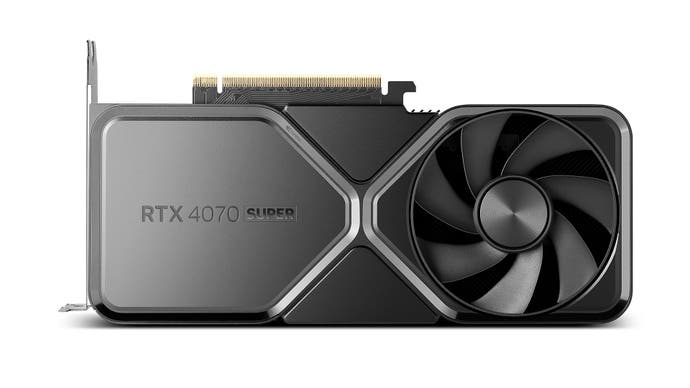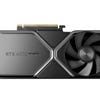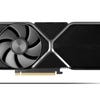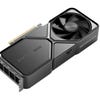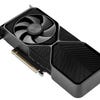Nvidia GeForce RTX 4070 Super review: more frames for less money
RTX 3090-class performance for £579.
History has a way of repeating itself. Back in 2018, Nvidia released its first wave of RTX graphics cards, boasting RT and machine learning features - but also arriving with some eye-watering price rises. £530 for the RTX 2070, anyone? However, balance was restored to the Force with the 2019 'Super' refresh, where 60, 70 and 80 class GPUs were beefed up in terms of specs with a price-cut to boot. So it is with the controversial RTX 40-series cards based on the Ada Lovelace architecture. Saddled with unflattering price vs performance comparisons up against the RTX 3080 10GB, this time it's the RTX 4070, 4070 Ti and 4080 that get the Super treatment.
It looks like Nvidia is going to release one new GPU per week and that kicks off with the RTX 4070 Super. It's priced at $599 US/£579 UK - the same price as the RTX 4070 - and is essentially the same card as its predecessor, with two notable improvements. Firstly, the CUDA core count is significantly increased: 7168 cores vs 5888, meaning a nigh-on 22 percent improvement. And to push performance on still further, there's a 10 percent increase in TGP - more juice to get more from the more fully enabled rendition of the AD104 processor. And as it is AD104 in place, there's no chance of a wider memory interface, meaning we're still on a 192-bit bus with 504GB/s of bandwidth - that bus also limiting the 4070 Super to the same 12GB of GDDR6X memory.
What we should be hoping for a good-sized performance lift to the standard RTX 4070, perhaps knocking on the door of RTX 4070 Ti performance without an increase in price. The vanilla 4070 gets a $50 price cut, meanwhile, with Nvidia heavily hinting that third party partners can reduce that still further to more meaningfully compete with AMD's impressive RX 7800 XT. We'll talk about the other Super cards in due course, but the specs don't lie: RTX 4080 Super is all about the price cut down to $999/£959 with only a minimal spec boost. RTX 4070 Ti Super is interesting though: users are bumped up to AD103 silicon with the wider memory bus opening the door to 16GB of memory - sorely needed at its $799/£769 price level.
| 4080 Super | 4080 | 4070 Ti Super | 4070 Ti | 4070 Super | 4070 | |
|---|---|---|---|---|---|---|
| Processor | AD103 | AD103 | AD103 | AD104 | AD104 | AD104 |
| CUDA Cores | 10240 | 9728 | 8448 | 7680 | 7168 | 5888 |
| Boost Clock | 2.56GHz | 2.51GHz | 2.61GHz | 2.61GHz | 2.48GHz | 2.48GHz |
| Mem Allocation | 16GB | 16GB | 16GB | 12GB | 12GB | 12GB |
| Mem Interface | 256-bit | 256-bit | 256-bit | 192-bit | 192-bit | 192-bit |
| Mem Bandwidth | 736GB/s | 717GB/s | 672GB/s | 504GB/s | 504GB/s | 504GB/s |
| TGP | 320W | 320W | 285W | 285W | 220W | 200W |
| US MSRP | $999 | $1199 | $799 | $799 | $599 | $599 |
| UK RRP | £969 | £1199 | £769 | £799 | £579 | £589 |
| Release date | 31/1/23 | Out | 24/1/23 | Out | 17/1/23 | Out |
For review today, we have the Founders Edition version of the RTX 4070 Super. Made by Nvidia itself, I consider the vanilla 4070 FE to be the definitive version of the card - beautifully built but not horrendously over-engineered in the way that partner cards tend to be. The 4070 Super FE is similarly delightful for all the same reasons, but this time Nvidia adds a little further spice with a Spinal Tap-style 'none more black' colour swap.
It attracts fingerprints something rotten, but it's genuinely a great-looking product - and bearing in mind you're getting circa RTX 3090 performance in a traditionally-sized GPU with excellent energy efficiency, this is just as much of a winner as the RTX 4070 was when we first looked at it.
Beyond that, there's nothing new. It's the same form factor overall, with the same array of ports: HDMI 2.1 and three DisplayPort 1.4a outputs. Power is delivered via the controversial 12VHPWR PSU socket, and there's a dual eight-pin PCIe power cable adaptor in the box. The box in question is also standard Nvidia fare for the 70 series cards and above - which is to say that it's absolutely gigantic, bearing in mind the relatively modest size of the contents therein.
Power analysis next, using Nvidia's PCAT interposer hardware sitting between the graphics card and its power sources (PCIe slot and auxiliary inputs). We measure average power draw along with frame-rate. Divide the former by the latter and you get joules per frame - and the lower that is, the better.
There's not much to tell with this particular story - it's the same as it was when we reviewed the Radeon RX 7800 XT. The Ada Lovelace architecture continues to deliver first class power efficiency, which in turn means that even the svelte Founders Edition cards - including 4070 Super - are cool to the touch and very quiet indeed.
There are substantial efficiency gains from Nvidia over AMD when ray-traced games are tested, but even in rasterisation there remains a significant advantage, as seen in the Forza Horizon 5 result here. Hitman 3 highlights that when a particular title has a vendor advantage - in this case AMD - Team Red's efficiency obviously improves, bringing it more into line with Ada's results.
| RX 7800 XT | RTX 4070 | RTX 4070S | RTX 4060 Ti | |
|---|---|---|---|---|
| Control, 1440p, High RT | 251.0W/49.6fps - 5.1 Joules Per Frame | 199.1W/57.2fps - 3.5 Joules Per Frame | 226.6W/65.1fps - 3.5 Joules Per Frame | 153.1W/42fps - 3.7 Joules Per Frame |
| Forza Horizon 5, 1440p, Extreme, RT Off, 4x MSAA | 240.3W/127.7fps - 1.9 Joules Per Frame | 164.4W/119.8fps - 1.4 Joules Per Frame | 181.6W/136.0fps - 1.3 Joules Per Frame | 114.4W/89.1fps - 1.3 Joules Per Frame |
| Hitman 3, 1440p, Max, RT Off | 252.2W/229.2fps - 1.1 Joules Per Frame | 196.5W/192.6fps - 1.0 Joules Per Frame | 220.0W/200.0fps - 1.1 Joules Per Frame | 154.7W/148fps - 1.0 Joules Per Frame |
With the preliminaries out of the way, it's time to get into the benchmarks proper. As usual, we're using a high-end rig that pairs a Core i9 13900K with 6000MT/s G.Skill DDR5 and an Asus ROG Maximus Hero Z690 motherboard, minimising CPU bottlenecking to show GPU differences more clearly.
Nvidia GeForce RTX 4070 Super Analysis
- Introduction [This Page]
- RT benchmarks: Dying Light 2, Cyberpunk 2077, Control
- RT benchmarks: Metro Exodus Enhanced Edition, F1 22
- RT/DLSS/FSR2/DLSS3 benchmarks: Cyberpunk 2077, Dying Light 2, Forza Horizon 5
- Game benchmarks: Control, Cyberpunk 2077, F1 22, Forza Horizon 5
- Game benchmarks: Hitman 3, A Plague Tale: Requiem, Returnal
- Conclusions and recommendations
